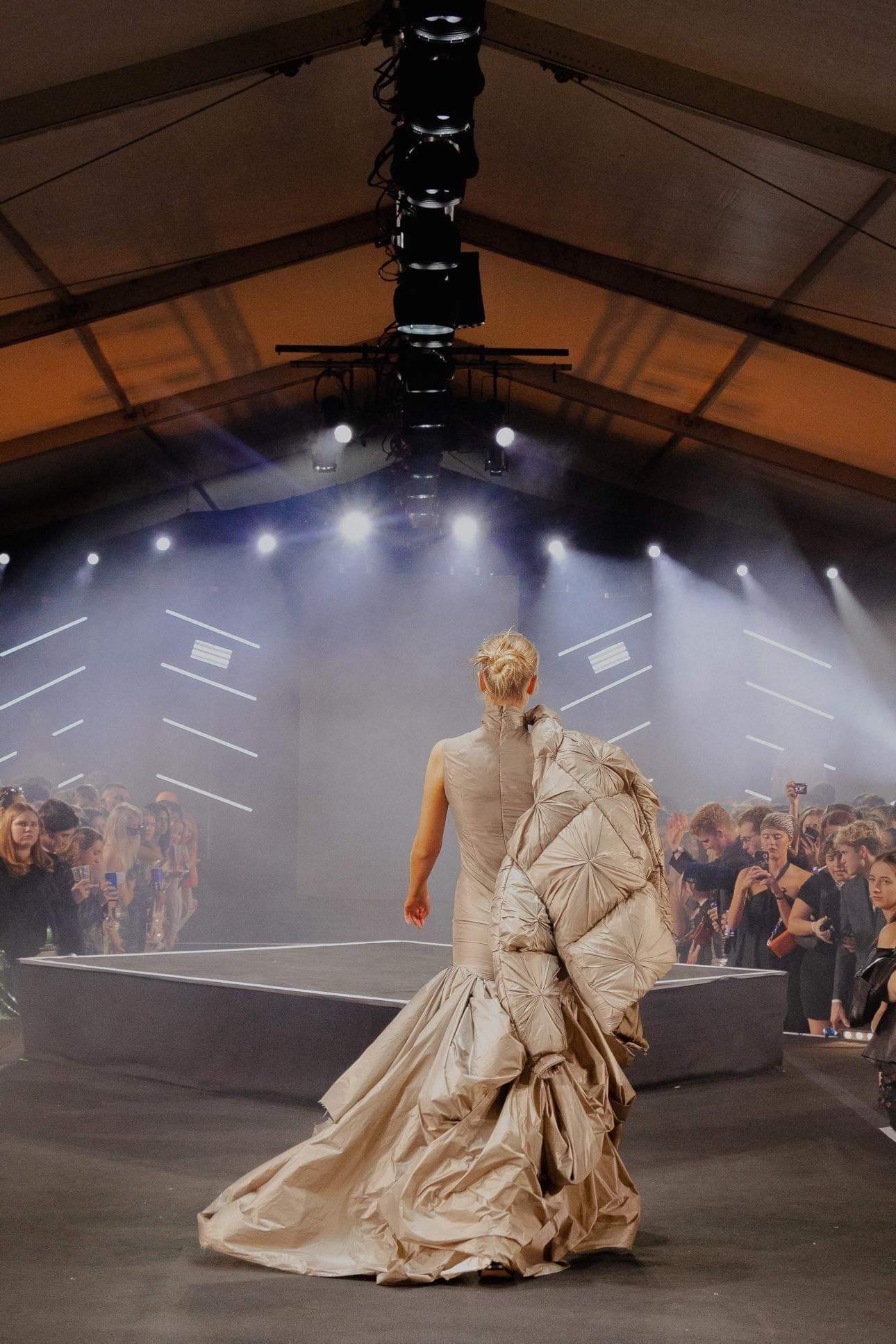Three Looks from ‘FS 2024: FUTURE’
By Jake Erlewine
The St Andrews Charity Fashion Show – otherwise known as FS – is one of the mainstay events of the University’s social season, and its 2024 edition was a remarkable success in straddling the vast divide between high fashion and university culture. With this year themed around the idea of FUTURE, antithetical to the 2023 theme of REVIVAL, the creative team of FS conducted a thorough examination of what future manifests as in contemporary fashion, while also attending to the idea of trend-cycling with outfits that give a nod to the fashion of past decades.
After the success of REVIVAL, which was voted Scottish Fashion Show of the Year, FS once again chose a theme based on time. With Red Bull and Moët heading up a prolific pack of sponsors including Swarovski and Chanel, and brands such as Rowing Blazers and Eileen Fisher making an appearance on the runway, this was undoubtedly an extravagant year for FS. This year, instead of the horseshoe-shaped runway familiar to guests over the past couple of years, the runway extended in a straight line into the marquee, with a futuristic raised platform in the middle of the path that enabled the standout pieces to be visible to the whole audience. In accordance with tradition, the show was presented in two parts divided with an intermission, where a silent auction took place. The auctioning of dresses from the show, corporate box tickets to a hockey game, and other items raised the crowd to an excited pitch as bids flew in from all corners, raising funds for FS’s charity partner of choice, Genetic Alliance UK.
The show took place in Lower College Hall, and the imposing bell tower of St Salvator’s Chapel served as a counterpoint to the techno-futuristic themes displayed on the runway. This set the stage for a jarring transition as guests entered the pavilion under its shadow – one from a space firmly rooted in traditions to one with both feet squarely in the future. As the lights dimmed and the show began, the models walked out clad in different black looks, the most striking of which were the down gilet worn by model Alphonse Jones and the Ramy Brook sequined minidress worn by Leah Hanson. The two outfits explored simultaneously occurring yet disparate themes in contemporary fashion design – the gilet is a product of the quest to incorporate practicality and the utilitarian into luxury items, while the dress represents the impractical yet wonderfully expressive elegance of evening wear. The union of two radically different outfits on the runway embodies the show’s rejection of a monolithic perspective of futurity in favor of one that portrays the future as a quickly changing and evolving setting, and one that needs purpose-fit clothes to fit that mentality. The first half of the show in particular leaned mainly into the expressive, at a massive benefit to the spectators, who were continuously awed by one flashy fit after another.
An interesting fusion between these two themes, however, came in the form of a combination down jacket and dress, pictured above. The air pockets of the beige jacket paired superbly with the flowing drapery of the dress, combining everyday wear and gala dress into one unconventional composite look. This contradictory trend of pairing up down jackets with dresses has been observed on London runways since 2016, especially in the work of younger designers such as Caitlin Price. At FUTURE, however, the outfit’s brutalist coloring seems to ask questions about the place of gala dresses in a culture where casual fashion and streetwear are currently in vogue. The designer’s answer to this question is not a rejection; on the other hand, the combination suggests that streetwear and fashion are the same. In the past, the term ‘streetwear’ has been used to denigrate designers who do not necessarily fit the couture mould, dismissing their output as somehow lacking artistry. Could FS be pointing the way to a future that accepts these differing design schools as equals on the runway?
While examining futurity took center stage at the show, several looks analyzed the place that traditional fashion might take within future high fashion. Being set in St Andrews, a town steeped in Scottish history and tradition, it was interesting to see the inclusion of tartan-based looks within the FS lookbook. Chief among these was Rowing Blazers’ contemporary take on the MacLeod tartan pattern, with model Vaanya Singh sporting the brand’s ‘MacLeod Tartan’ Jacket and Trousers. This incredible look impresses a classic Scottish kilt pattern onto the silhouette of a contemporary pantsuit. While fitting alongside Rowing Blazers’ other subversions of prep classics, this pantsuit also serves as a deconstruction of the relationship between time and tradition. Using tartan as a source of inspiration depicts the fact that contemporary fashion is not isolated within its age; rather, today’s designers look more and more towards the fashion of the past to aid their conceptions of how the present should dress. Kilts, while viewed as a novelty outside of Scotland, are central to its national identity, and FS posits that contemporary fashion should celebrate the quirks of traditional clothing rather than suppress them. It is natural to wonder which present-day fashion trends will be venerated similarly through homage in the future, but only time and distance will tell.
In all, on top of being a wonderful night out, FS shared a stunning vision of future fashion with its audience: one that pays tribute to past conceptions of tradition and luxury while simultaneously blazing new trails of its own. It is always interesting to reflect on what stays the same in times of rapid change, and the ability of FS to put on thought-provoking and fun fashion shows in the face of the constantly evolving world of design clearly belongs



